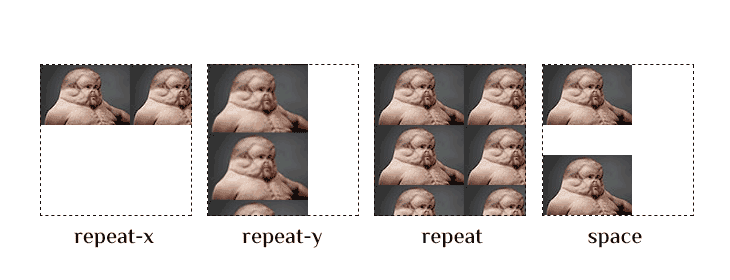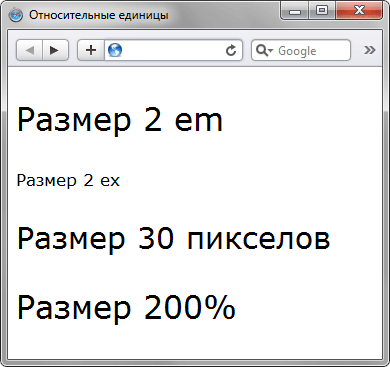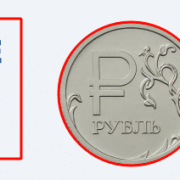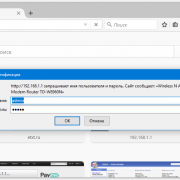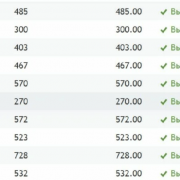Позиционирование
Содержание:
- Introduction
- Property Values
- CSS Reference
- CSS Properties
- Fixed positioning
- CSS Advanced
- position: sticky;
- position: sticky;
- CSS Advanced
- CSS Properties
- Overlapping Elements
- position: absolute;
- position: absolute;
- Overlapping Elements
- Property Values
- Containing blocks
- Summary
- Exercise questions
- CSS Tutorial
- CSS position: relative
- CSS Properties
- CSS Reference
- CSS Properties
- CSS Tutorial
Introduction
Absolutely positioned elements are removed entirely from the document flow. That means they have no effect at all on their parent element or on the elements that occur after them in the source code. An absolutely positioned element will therefore overlap other content unless you take action to prevent it. Sometimes, of course, this overlap is exactly what you desire, but you should be aware of it, to make sure you are getting the layout you want!
Fixed positioning is really just a specialized form of absolute positioning; elements with fixed positioning are fixed relative to the viewport/browser window rather than the containing element; even if the page is scrolled, they stay in exactly the same position inside the browser window.
Before I talk about all this though, I’ll cover an essential prequisite concept—containing blocks.
Property Values
| Value | Description | Play it |
|---|---|---|
| static | Default value. Elements render in order, as they appear in the document flow | Play it » |
| absolute | The element is positioned relative to its first positioned (not static) ancestor element | Play it » |
| fixed | The element is positioned relative to the browser window | Play it » |
| relative | The element is positioned relative to its normal position, so «left:20px» adds 20 pixels to the element’s LEFT position |
Play it » |
| sticky | The element is positioned based on the user’s scroll position
A sticky element toggles between and , depending on the scroll position. It is positioned relative until a given offset position is met in the viewport — then it «sticks» in place (like position:fixed). Note: Not supported in IE/Edge 15 or earlier. Supported in Safari from version 6.1 with a -webkit- prefix. |
Try it » |
| initial | Sets this property to its default value. Read about initial | Play it » |
| inherit | Inherits this property from its parent element. Read about inherit |
CSS Reference
CSS ReferenceCSS Browser SupportCSS SelectorsCSS FunctionsCSS Reference AuralCSS Web Safe FontsCSS Font FallbacksCSS AnimatableCSS UnitsCSS PX-EM ConverterCSS ColorsCSS Color ValuesCSS Default ValuesCSS Entities
CSS Properties
align-content
align-items
align-self
all
animation
animation-delay
animation-direction
animation-duration
animation-fill-mode
animation-iteration-count
animation-name
animation-play-state
animation-timing-function
backface-visibility
background
background-attachment
background-blend-mode
background-clip
background-color
background-image
background-origin
background-position
background-repeat
background-size
border
border-bottom
border-bottom-color
border-bottom-left-radius
border-bottom-right-radius
border-bottom-style
border-bottom-width
border-collapse
border-color
border-image
border-image-outset
border-image-repeat
border-image-slice
border-image-source
border-image-width
border-left
border-left-color
border-left-style
border-left-width
border-radius
border-right
border-right-color
border-right-style
border-right-width
border-spacing
border-style
border-top
border-top-color
border-top-left-radius
border-top-right-radius
border-top-style
border-top-width
border-width
bottom
box-decoration-break
box-shadow
box-sizing
break-after
break-before
break-inside
caption-side
caret-color
@charset
clear
clip
clip-path
color
column-count
column-fill
column-gap
column-rule
column-rule-color
column-rule-style
column-rule-width
column-span
column-width
columns
content
counter-increment
counter-reset
cursor
direction
display
empty-cells
filter
flex
flex-basis
flex-direction
flex-flow
flex-grow
flex-shrink
flex-wrap
float
font
@font-face
font-family
font-feature-settings
font-kerning
font-size
font-size-adjust
font-stretch
font-style
font-variant
font-variant-caps
font-weight
gap
grid
grid-area
grid-auto-columns
grid-auto-flow
grid-auto-rows
grid-column
grid-column-end
grid-column-gap
grid-column-start
grid-gap
grid-row
grid-row-end
grid-row-gap
grid-row-start
grid-template
grid-template-areas
grid-template-columns
grid-template-rows
hanging-punctuation
height
hyphens
@import
isolation
justify-content
@keyframes
left
letter-spacing
line-height
list-style
list-style-image
list-style-position
list-style-type
margin
margin-bottom
margin-left
margin-right
margin-top
max-height
max-width
@media
min-height
min-width
mix-blend-mode
object-fit
object-position
opacity
order
outline
outline-color
outline-offset
outline-style
outline-width
overflow
overflow-x
overflow-y
padding
padding-bottom
padding-left
padding-right
padding-top
page-break-after
page-break-before
page-break-inside
perspective
perspective-origin
pointer-events
position
quotes
resize
right
row-gap
scroll-behavior
tab-size
table-layout
text-align
text-align-last
text-decoration
text-decoration-color
text-decoration-line
text-decoration-style
text-indent
text-justify
text-overflow
text-shadow
text-transform
top
transform
transform-origin
transform-style
transition
transition-delay
transition-duration
transition-property
transition-timing-function
unicode-bidi
user-select
vertical-align
visibility
white-space
width
word-break
word-spacing
word-wrap
writing-mode
z-index
Fixed positioning
An element with is fixed with respect to the viewport. It stays where it is, even if the document is scrolled. For a fixed element will be repeated on each printed page.
Note that Internet Explorer versions 6 and older do not support fixed positioning at all. If you use one of those browsers you will not be able to see the results of the examples in this section.
Whereas the position and dimensions of an element with are relative to its containing block, the position and dimensions of an element with are always relative to the initial containing block. This is normally the viewport: the browser window or the paper’s page box. To demonstrate this, in the example below you will make one of your elements fixed. You will make the other one very tall in order to cause a scrollbar, to make it easier to see the effect it has.
- Make the following changes to your CSS code:
#inner {
width: 5em;
height: 5em;
background-color: #999;
'''position: fixed;''' '''top: 1em;'''
left: 1em;
}
#second
width: 5em;
'''height: 150em;'''
background-color: #00f;
position: absolute;
top: 1em;
left: 2em;
}
- Save and reload. If you don’t get a vertical scrollbar, increase the value for . (What kind of giant monitor do you have, anyway?) The tall blue element extends beyond the bottom of the window. Scroll the page downward, and keep an eye on the grey square in the top left-hand corner. is now fixed in position 1em from the top of the window and 1em from the left side, therefore as you scroll, the grey box stays in the same place on the screen.
CSS Advanced
CSS Rounded CornersCSS Border ImagesCSS BackgroundsCSS ColorsCSS Color KeywordsCSS Gradients
Linear Gradients
Radial Gradients
CSS Shadows
Shadow Effects
Box Shadow
CSS Text EffectsCSS Web FontsCSS 2D TransformsCSS 3D TransformsCSS TransitionsCSS AnimationsCSS TooltipsCSS Style ImagesCSS Image ReflectionCSS object-fitCSS object-positionCSS ButtonsCSS PaginationCSS Multiple ColumnsCSS User InterfaceCSS Variables
The var() Function
Overriding Variables
Variables and JavaScript
Variables in Media Queries
CSS Box SizingCSS Media QueriesCSS MQ ExamplesCSS Flexbox
CSS Flexbox
CSS Flex Container
CSS Flex Items
CSS Flex Responsive
position: sticky;
An element with is positioned based on the user’s scroll position.
A sticky element toggles between and , depending on the scroll position. It is positioned relative until a given offset position is met in the viewport — then it «sticks» in place (like position:fixed).
Note: Internet Explorer does not support sticky positioning. Safari requires a -webkit-
prefix (see example below). You must also specify at least one of , , or for
sticky positioning to work.
In this example, the sticky element sticks to the top of the page (), when you reach its scroll position.
Example
div.sticky { position: -webkit-sticky; /* Safari */ position:
sticky; top: 0; background-color: green;
border: 2px solid #4CAF50;}
position: sticky;
An element with is positioned based on the user’s scroll position.
A sticky element toggles between and , depending on the scroll position. It is positioned relative until a given offset position is met in the viewport — then it «sticks» in place (like position:fixed).
Note: Internet Explorer does not support sticky positioning. Safari requires a -webkit-
prefix (see example below). You must also specify at least one of , , or for
sticky positioning to work.
In this example, the sticky element sticks to the top of the page (), when you reach its scroll position.
Example
div.sticky { position: -webkit-sticky; /* Safari */ position:
sticky; top: 0; background-color: green;
border: 2px solid #4CAF50;}
CSS Advanced
CSS Rounded CornersCSS Border ImagesCSS BackgroundsCSS ColorsCSS Color KeywordsCSS Gradients
Linear Gradients
Radial Gradients
CSS Shadows
Shadow Effects
Box Shadow
CSS Text EffectsCSS Web FontsCSS 2D TransformsCSS 3D TransformsCSS TransitionsCSS AnimationsCSS TooltipsCSS Style ImagesCSS Image ReflectionCSS object-fitCSS object-positionCSS ButtonsCSS PaginationCSS Multiple ColumnsCSS User InterfaceCSS Variables
The var() Function
Overriding Variables
Variables and JavaScript
Variables in Media Queries
CSS Box SizingCSS Media QueriesCSS MQ ExamplesCSS Flexbox
CSS Flexbox
CSS Flex Container
CSS Flex Items
CSS Flex Responsive
CSS Properties
align-contentalign-itemsalign-selfallanimationanimation-delayanimation-directionanimation-durationanimation-fill-modeanimation-iteration-countanimation-nameanimation-play-stateanimation-timing-functionbackface-visibilitybackgroundbackground-attachmentbackground-blend-modebackground-clipbackground-colorbackground-imagebackground-originbackground-positionbackground-repeatbackground-sizeborderborder-bottomborder-bottom-colorborder-bottom-left-radiusborder-bottom-right-radiusborder-bottom-styleborder-bottom-widthborder-collapseborder-colorborder-imageborder-image-outsetborder-image-repeatborder-image-sliceborder-image-sourceborder-image-widthborder-leftborder-left-colorborder-left-styleborder-left-widthborder-radiusborder-rightborder-right-colorborder-right-styleborder-right-widthborder-spacingborder-styleborder-topborder-top-colorborder-top-left-radiusborder-top-right-radiusborder-top-styleborder-top-widthborder-widthbottombox-decoration-breakbox-shadowbox-sizingbreak-afterbreak-beforebreak-insidecaption-sidecaret-color@charsetclearclipclip-pathcolorcolumn-countcolumn-fillcolumn-gapcolumn-rulecolumn-rule-colorcolumn-rule-stylecolumn-rule-widthcolumn-spancolumn-widthcolumnscontentcounter-incrementcounter-resetcursordirectiondisplayempty-cellsfilterflexflex-basisflex-directionflex-flowflex-growflex-shrinkflex-wrapfloatfont@font-facefont-familyfont-feature-settingsfont-kerningfont-sizefont-size-adjustfont-stretchfont-stylefont-variantfont-variant-capsfont-weightgapgridgrid-areagrid-auto-columnsgrid-auto-flowgrid-auto-rowsgrid-columngrid-column-endgrid-column-gapgrid-column-startgrid-gapgrid-rowgrid-row-endgrid-row-gapgrid-row-startgrid-templategrid-template-areasgrid-template-columnsgrid-template-rowshanging-punctuationheighthyphens@importisolationjustify-content@keyframesleftletter-spacingline-heightlist-stylelist-style-imagelist-style-positionlist-style-typemarginmargin-bottommargin-leftmargin-rightmargin-topmax-heightmax-width@mediamin-heightmin-widthmix-blend-modeobject-fitobject-positionopacityorderoutlineoutline-coloroutline-offsetoutline-styleoutline-widthoverflowoverflow-xoverflow-ypaddingpadding-bottompadding-leftpadding-rightpadding-toppage-break-afterpage-break-beforepage-break-insideperspectiveperspective-originpointer-eventspositionquotesresizerightrow-gapscroll-behaviortab-sizetable-layouttext-aligntext-align-lasttext-decorationtext-decoration-colortext-decoration-linetext-decoration-styletext-indenttext-justifytext-overflowtext-shadowtext-transformtoptransformtransform-origintransform-styletransitiontransition-delaytransition-durationtransition-propertytransition-timing-functionunicode-bidiuser-selectvertical-alignvisibilitywhite-spacewidthword-breakword-spacingword-wrapwriting-modez-index
Overlapping Elements
When elements are positioned, they can overlap other elements.
The property specifies the stack order of an element (which element should be placed in front of, or behind, the others).
An element can have a positive or negative stack order:
Because the image has a z-index of -1, it will be placed behind the text.
Example
img
{
position: absolute;
left: 0px;
top: 0px;
z-index: -1;
}
An element with greater stack order is always in front of an element with a lower stack order.
Note: If two positioned elements overlap without a
specified, the element positioned last in the HTML code will be shown on top.
position: absolute;
An element with is positioned relative to the nearest positioned ancestor
(instead of positioned relative to the viewport, like fixed).
However; if an absolute positioned element has no positioned ancestors,
it uses the document body, and moves along with page scrolling.
Note: A «positioned» element is one whose position is anything except
.
Here is a simple example:
This <div> element has position: relative;
Here is the CSS that is used:
Example
div.relative { position: relative;
width: 400px; height: 200px; border: 3px solid #73AD21;}
div.absolute { position: absolute;
top: 80px; right: 0; width: 200px; height: 100px; border: 3px solid #73AD21;}
position: absolute;
An element with is positioned relative to the nearest positioned ancestor
(instead of positioned relative to the viewport, like fixed).
However; if an absolute positioned element has no positioned ancestors,
it uses the document body, and moves along with page scrolling.
Note: A «positioned» element is one whose position is anything except
.
Here is a simple example:
This <div> element has position: relative;
Here is the CSS that is used:
Example
div.relative { position: relative;
width: 400px; height: 200px; border: 3px solid #73AD21;}
div.absolute { position: absolute;
top: 80px; right: 0; width: 200px; height: 100px; border: 3px solid #73AD21;}
Overlapping Elements
When elements are positioned, they can overlap other elements.
The property specifies the stack order of an element (which element should be placed in front of, or behind, the others).
An element can have a positive or negative stack order:
Because the image has a z-index of -1, it will be placed behind the text.
Example
img
{
position: absolute;
left: 0px;
top: 0px;
z-index: -1;
}
An element with greater stack order is always in front of an element with a lower stack order.
Note: If two positioned elements overlap without a
specified, the element positioned last in the HTML code will be shown on top.
Property Values
| Value | Description | Play it |
|---|---|---|
| static | Default value. Elements render in order, as they appear in the document flow | Play it » |
| absolute | The element is positioned relative to its first positioned (not static) ancestor element | Play it » |
| fixed | The element is positioned relative to the browser window | Play it » |
| relative | The element is positioned relative to its normal position, so «left:20px» adds 20 pixels to the element’s LEFT position |
Play it » |
| sticky | The element is positioned based on the user’s scroll position
A sticky element toggles between and , depending on the scroll position. It is positioned relative until a given offset position is met in the viewport — then it «sticks» in place (like position:fixed). Note: Not supported in IE/Edge 15 or earlier. Supported in Safari from version 6.1 with a -webkit- prefix. |
Try it » |
| initial | Sets this property to its default value. Read about initial | Play it » |
| inherit | Inherits this property from its parent element. Read about inherit |
Containing blocks
An essential concept when it comes to absolute positioning is the containing block: the block box that the position and dimensions of the absolutely positioned box are relative to. For static boxes and relatively positioned boxes the containing block is the nearest block-level ancestor—the parent element in other words. For absolutely positioned elements however it’s a little more complicated. In this case the containing block is the nearest positioned ancestor. By “positioned” I mean an element whose property is set to , or —in other words, anything except normal static elements.
So, by setting for an element you make it the containing block for any absolutely positioned descendant (child elements), whether they appear immediately below the relatively positioned element in the hierarchy, or further down the hierarchy.
If an absolutely positioned element has no positioned ancestor, then the containing block is something called the “initial containing block,” which in practice equates to the element. If you are looking at the web page on screen, this means the browser window; if you are printing the page, it means the page boundary.
Elements with fixed positioning differ from this slightly—they always have the initial containing block as their containing block.
So, let’s summarize this in a set of easy steps—to find the containing block for an element with , this is what you need to do:
- Look at the parent element of the absolutely positioned element—does that element’s property have one of the values , or ?
- If so, you’ve found the containing block.
- If not, move to the parent’s parent element and repeat from step 1 until you find the containing block or run out of ancestors.
- If you’ve reached the element without finding a positioned ancestor, then the containing block is the element.
Summary
Absolutely positioned elements are removed entirely from the document flow. They will overlap other content unless you make room for them. If all child elements of a container are absolutely positioned, the parent’s height will collapse to zero. Absolutely positioned elements are positioned with respect to a containing block, which is the nearest postioned ancestor. If there is no positioned ancestor, the viewport will be the containing block.
Elements with fixed positioning are fixed with respect to the viewport—the viewport is always their containing block. They always appear at the same place inside the browser window when viewed on screen; when printed, they will appear on each page. The positions of each edge of an absolutely positioned element can be specified with the , , and properties. The value of each property specifies the distance of that edge to the corresponding edge of the element’s containing block.
All positioned elements are rendered at a certain stack level within a stacking context. You can change the stack level of a positioned element using the property. When is specified as an integer value, the element establishes a local stacking context for its descentants.
Exercise questions
- Undo the changes from the fixed positioning example and then change the stacking order between the four absolutely positioned squares so that the grey square is at the back, followed by the blue, yellow and cyan squares in that order. (Tip: remove all declarations and start over.)
- Move the yellow square up and to the right by setting and . Then make it appear behind the element, so that the red border appears across the yellow square.
- Modify the layout from the previous exercise to make the navigation use fixed positioning. You’ll have to remove the automatic horizontal margins on the element to make this possible. Add enough content to the main column and/or the sidebar to make a scrollbar appear, so that you can verify that it works.
CSS Tutorial
CSS HOMECSS IntroductionCSS SyntaxCSS SelectorsCSS How ToCSS CommentsCSS Colors
Colors
RGB
HEX
HSL
CSS Backgrounds
Background Color
Background Image
Background Repeat
Background Attachment
Background Shorthand
CSS Borders
Borders
Border Width
Border Color
Border Sides
Border Shorthand
Rounded Borders
CSS Margins
Margins
Margin Collapse
CSS PaddingCSS Height/WidthCSS Box ModelCSS Outline
Outline
Outline Width
Outline Color
Outline Shorthand
Outline Offset
CSS Text
Text Color
Text Alignment
Text Decoration
Text Transformation
Text Spacing
Text Shadow
CSS Fonts
Font Family
Font Web Safe
Font Fallbacks
Font Style
Font Size
Font Google
Font Pairings
Font Shorthand
CSS IconsCSS LinksCSS ListsCSS Tables
Table Borders
Table Size
Table Alignment
Table Style
Table Responsive
CSS DisplayCSS Max-widthCSS PositionCSS OverflowCSS Float
Float
Clear
Float Examples
CSS Inline-blockCSS AlignCSS CombinatorsCSS Pseudo-classCSS Pseudo-elementCSS OpacityCSS Navigation Bar
Navbar
Vertical Navbar
Horizontal Navbar
CSS DropdownsCSS Image GalleryCSS Image SpritesCSS Attr SelectorsCSS FormsCSS CountersCSS Website LayoutCSS UnitsCSS SpecificityCSS !important
CSS position: relative
Свойство position: relative — относительное позиционирование. Мы видели пример использования этого элемента чуть выше.
При задании этого параметра, активизируются следующие параметры:
- top
- bottom
- left
- right
Если не указано никаких смещений, т.е.
то отображение html-элемента происходит на том же месте как и по умолчанию (т.е. без задания relative). Если же указаны смещения, то элемент будет смещен относительно своего расположения либо ниже, выше, левее или правее. При этом другие окружающие элементы считают, что никакого смещения нету. Короче говоря, использовать relative имеет смысл только если мы задали смещения.
Для пояснения этой особенности приведем пример.
Примера 2. HTML-код:
Код преобразуется в следующее:
Примера 2*. Добавим к первому диву: position: relative;. HTML-код:
Код преобразуется в следующее:
Наш красный квадрат переместился на 200 пикселей влево и на 100 пикселей вниз и частично своей площадью закрыл текст. При этом то место, где должен был наш квадрат текст по-прежнему его огибает как будто он там есть.
CSS Properties
align-contentalign-itemsalign-selfallanimationanimation-delayanimation-directionanimation-durationanimation-fill-modeanimation-iteration-countanimation-nameanimation-play-stateanimation-timing-functionbackface-visibilitybackgroundbackground-attachmentbackground-blend-modebackground-clipbackground-colorbackground-imagebackground-originbackground-positionbackground-repeatbackground-sizeborderborder-bottomborder-bottom-colorborder-bottom-left-radiusborder-bottom-right-radiusborder-bottom-styleborder-bottom-widthborder-collapseborder-colorborder-imageborder-image-outsetborder-image-repeatborder-image-sliceborder-image-sourceborder-image-widthborder-leftborder-left-colorborder-left-styleborder-left-widthborder-radiusborder-rightborder-right-colorborder-right-styleborder-right-widthborder-spacingborder-styleborder-topborder-top-colorborder-top-left-radiusborder-top-right-radiusborder-top-styleborder-top-widthborder-widthbottombox-decoration-breakbox-shadowbox-sizingbreak-afterbreak-beforebreak-insidecaption-sidecaret-color@charsetclearclipclip-pathcolorcolumn-countcolumn-fillcolumn-gapcolumn-rulecolumn-rule-colorcolumn-rule-stylecolumn-rule-widthcolumn-spancolumn-widthcolumnscontentcounter-incrementcounter-resetcursordirectiondisplayempty-cellsfilterflexflex-basisflex-directionflex-flowflex-growflex-shrinkflex-wrapfloatfont@font-facefont-familyfont-feature-settingsfont-kerningfont-sizefont-size-adjustfont-stretchfont-stylefont-variantfont-variant-capsfont-weightgapgridgrid-areagrid-auto-columnsgrid-auto-flowgrid-auto-rowsgrid-columngrid-column-endgrid-column-gapgrid-column-startgrid-gapgrid-rowgrid-row-endgrid-row-gapgrid-row-startgrid-templategrid-template-areasgrid-template-columnsgrid-template-rowshanging-punctuationheighthyphens@importisolationjustify-content@keyframesleftletter-spacingline-heightlist-stylelist-style-imagelist-style-positionlist-style-typemarginmargin-bottommargin-leftmargin-rightmargin-topmax-heightmax-width@mediamin-heightmin-widthmix-blend-modeobject-fitobject-positionopacityorderoutlineoutline-coloroutline-offsetoutline-styleoutline-widthoverflowoverflow-xoverflow-ypaddingpadding-bottompadding-leftpadding-rightpadding-toppage-break-afterpage-break-beforepage-break-insideperspectiveperspective-originpointer-eventspositionquotesresizerightrow-gapscroll-behaviortab-sizetable-layouttext-aligntext-align-lasttext-decorationtext-decoration-colortext-decoration-linetext-decoration-styletext-indenttext-justifytext-overflowtext-shadowtext-transformtoptransformtransform-origintransform-styletransitiontransition-delaytransition-durationtransition-propertytransition-timing-functionunicode-bidiuser-selectvertical-alignvisibilitywhite-spacewidthword-breakword-spacingword-wrapwriting-modez-index
CSS Reference
CSS ReferenceCSS Browser SupportCSS SelectorsCSS FunctionsCSS Reference AuralCSS Web Safe FontsCSS Font FallbacksCSS AnimatableCSS UnitsCSS PX-EM ConverterCSS ColorsCSS Color ValuesCSS Default ValuesCSS Entities
CSS Properties
align-content
align-items
align-self
all
animation
animation-delay
animation-direction
animation-duration
animation-fill-mode
animation-iteration-count
animation-name
animation-play-state
animation-timing-function
backface-visibility
background
background-attachment
background-blend-mode
background-clip
background-color
background-image
background-origin
background-position
background-repeat
background-size
border
border-bottom
border-bottom-color
border-bottom-left-radius
border-bottom-right-radius
border-bottom-style
border-bottom-width
border-collapse
border-color
border-image
border-image-outset
border-image-repeat
border-image-slice
border-image-source
border-image-width
border-left
border-left-color
border-left-style
border-left-width
border-radius
border-right
border-right-color
border-right-style
border-right-width
border-spacing
border-style
border-top
border-top-color
border-top-left-radius
border-top-right-radius
border-top-style
border-top-width
border-width
bottom
box-decoration-break
box-shadow
box-sizing
break-after
break-before
break-inside
caption-side
caret-color
@charset
clear
clip
clip-path
color
column-count
column-fill
column-gap
column-rule
column-rule-color
column-rule-style
column-rule-width
column-span
column-width
columns
content
counter-increment
counter-reset
cursor
direction
display
empty-cells
filter
flex
flex-basis
flex-direction
flex-flow
flex-grow
flex-shrink
flex-wrap
float
font
@font-face
font-family
font-feature-settings
font-kerning
font-size
font-size-adjust
font-stretch
font-style
font-variant
font-variant-caps
font-weight
gap
grid
grid-area
grid-auto-columns
grid-auto-flow
grid-auto-rows
grid-column
grid-column-end
grid-column-gap
grid-column-start
grid-gap
grid-row
grid-row-end
grid-row-gap
grid-row-start
grid-template
grid-template-areas
grid-template-columns
grid-template-rows
hanging-punctuation
height
hyphens
@import
isolation
justify-content
@keyframes
left
letter-spacing
line-height
list-style
list-style-image
list-style-position
list-style-type
margin
margin-bottom
margin-left
margin-right
margin-top
max-height
max-width
@media
min-height
min-width
mix-blend-mode
object-fit
object-position
opacity
order
outline
outline-color
outline-offset
outline-style
outline-width
overflow
overflow-x
overflow-y
padding
padding-bottom
padding-left
padding-right
padding-top
page-break-after
page-break-before
page-break-inside
perspective
perspective-origin
pointer-events
position
quotes
resize
right
row-gap
scroll-behavior
tab-size
table-layout
text-align
text-align-last
text-decoration
text-decoration-color
text-decoration-line
text-decoration-style
text-indent
text-justify
text-overflow
text-shadow
text-transform
top
transform
transform-origin
transform-style
transition
transition-delay
transition-duration
transition-property
transition-timing-function
unicode-bidi
user-select
vertical-align
visibility
white-space
width
word-break
word-spacing
word-wrap
writing-mode
z-index
CSS Tutorial
CSS HOMECSS IntroductionCSS SyntaxCSS SelectorsCSS How ToCSS CommentsCSS Colors
Colors
RGB
HEX
HSL
CSS Backgrounds
Background Color
Background Image
Background Repeat
Background Attachment
Background Shorthand
CSS Borders
Borders
Border Width
Border Color
Border Sides
Border Shorthand
Rounded Borders
CSS Margins
Margins
Margin Collapse
CSS PaddingCSS Height/WidthCSS Box ModelCSS Outline
Outline
Outline Width
Outline Color
Outline Shorthand
Outline Offset
CSS Text
Text Color
Text Alignment
Text Decoration
Text Transformation
Text Spacing
Text Shadow
CSS Fonts
Font Family
Font Web Safe
Font Fallbacks
Font Style
Font Size
Font Google
Font Pairings
Font Shorthand
CSS IconsCSS LinksCSS ListsCSS Tables
Table Borders
Table Size
Table Alignment
Table Style
Table Responsive
CSS DisplayCSS Max-widthCSS PositionCSS OverflowCSS Float
Float
Clear
Float Examples
CSS Inline-blockCSS AlignCSS CombinatorsCSS Pseudo-classCSS Pseudo-elementCSS OpacityCSS Navigation Bar
Navbar
Vertical Navbar
Horizontal Navbar
CSS DropdownsCSS Image GalleryCSS Image SpritesCSS Attr SelectorsCSS FormsCSS CountersCSS Website LayoutCSS UnitsCSS SpecificityCSS !important
